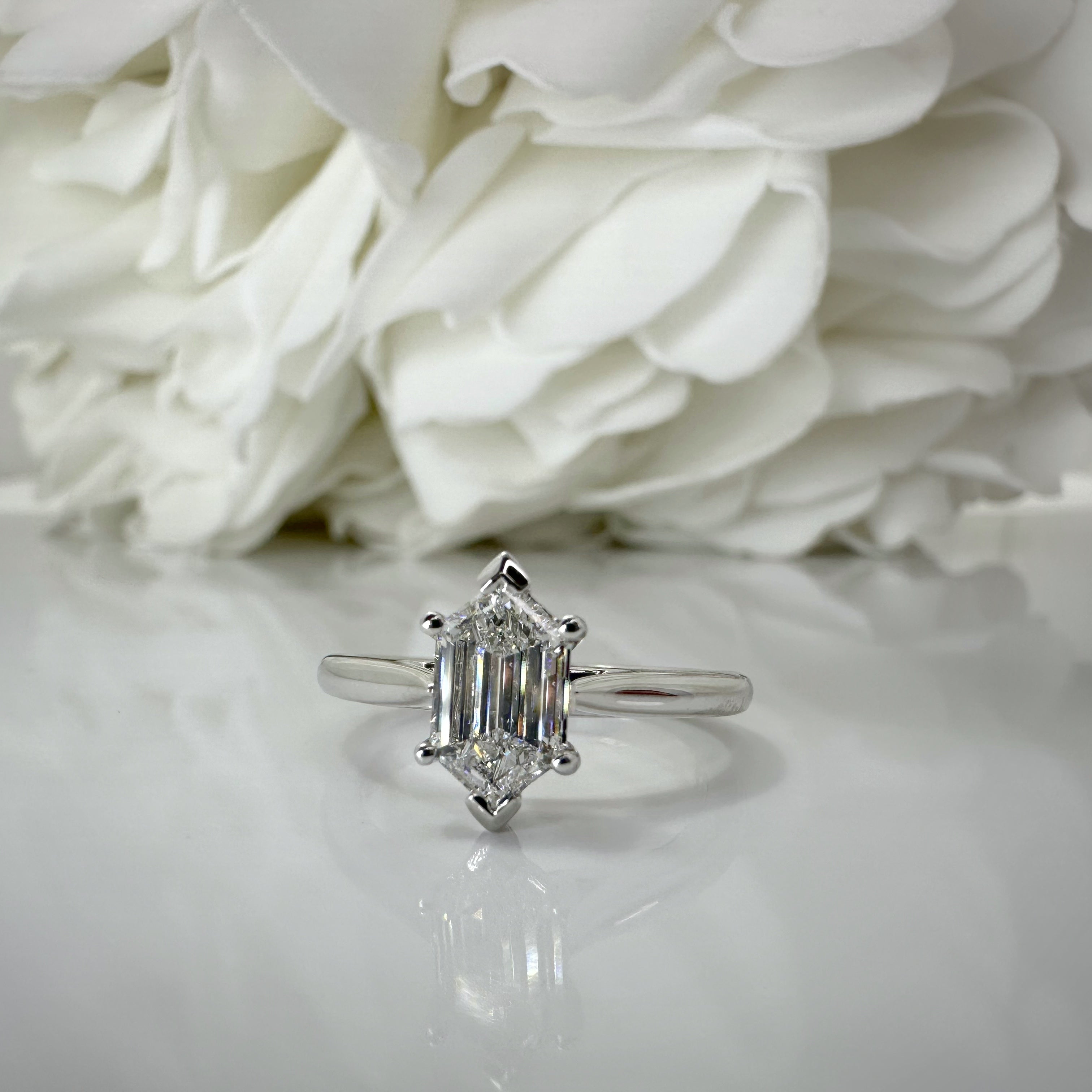
There’s something quietly elegant about a diamond tennis bracelet. It doesn’t scream for attention; it whispers it — that subtle shimmer on the wrist that catches the light just enough to make you pause. And lately, in New Zealand, that understated luxury seems to be having a real moment.
You might’ve noticed the trend yourself — influencers, stylists, even brides are falling in love again with this timeless piece of jewellery. But what’s interesting isn’t just that tennis bracelets are back. It’s how they’re coming back: cleaner, more ethical, and with a modern Kiwi twist.
As someone who spends a fair bit of time chatting with designers and jewellers, I can tell you — the conversation around diamonds in Aotearoa is changing fast.
A Bit of Sparkling History
Before we get into the local love affair, let’s rewind for a second. The “tennis bracelet” name comes from an almost comical accident in the 1980s. American tennis legend Chris Evert famously lost her diamond bracelet mid-match at the U.S. Open. She stopped the game until it was found — and just like that, a jewellery icon was born.
Since then, the tennis bracelet has symbolised effortless elegance. It’s not as flashy as a big diamond ring, nor as formal as a statement necklace. It’s the kind of jewellery that fits into everyday life — which might be why so many Kiwis are drawn to it.
Honestly, I get it. There’s a practicality to it that matches the New Zealand spirit: simple, refined, not too over the top.
The New Wave: Sustainable Glamour
Here’s where it gets really interesting. For decades, owning a diamond bracelet meant stepping into a complicated world of mining, environmental impact, and ethical questions. But now, technology’s opened the door to a more sustainable alternative — lab made diamonds.
If you haven’t heard much about them, they’re exactly what the name suggests: real diamonds created in controlled lab environments rather than mined from the earth. Chemically, optically, and physically, they’re identical to mined diamonds. The only difference is their origin — and often, the price tag.
In fact, when I spoke to a boutique jeweller in Auckland, she mentioned something that stuck with me.
“Our clients love that they can wear something stunning without feeling conflicted about where it came from. It’s luxury with a conscience,”
she said, gently polishing a delicate line of diamonds that seemed to glow under the studio lights.
You might not know this, but many of the finest jewellery houses in the world — including some in New Zealand — now offer full collections made entirely from lab-created stones. It’s no longer a niche choice; it’s the future of fine jewellery.
For anyone curious to see how far the craftsmanship has come, it’s worth having a look at a diamond tennis bracelet nz collection from local jewellers who specialise in lab diamonds. You’ll see just how refined these pieces have become — precision-cut stones, perfectly matched brilliance, and a finish that rivals anything from traditional diamond ateliers.
Kiwi Taste and Timeless Design
What I love about New Zealanders is our knack for blending casual elegance with substance. We don’t tend to buy jewellery just for show — there’s always a story or sentiment behind it. And that’s exactly what makes the tennis bracelet such a natural fit.
A classic diamond tennis bracelet pairs beautifully with everything from a crisp white shirt to an evening gown. It’s that quiet kind of luxury that doesn’t need to announce itself. And in New Zealand, where the pace is a little slower and the values a little deeper, that style resonates.
I’ve noticed that a lot of Kiwis are choosing tennis bracelets as gifts, too — for milestones like weddings, anniversaries, or even as self-purchases after reaching a personal goal. There’s something symbolic about that continuous line of diamonds: it represents consistency, resilience, and grace under pressure. All things we value pretty highly around here.
Why Lab Diamonds Make Sense in New Zealand
Let’s be real — New Zealanders are a practical bunch. We care about quality, but we also care about sustainability and fairness. The idea of lab-made diamonds fits right into that mindset. They’re more affordable, ethically sound, and honestly, they look incredible.
One of the most common questions I hear is, “Can you tell the difference?” And the short answer is no. Even professional gemologists often need specialised tools to distinguish between lab-created and mined diamonds.
Plus, lab-made diamonds tend to have fewer inclusions (those tiny imperfections that form in natural stones). The result is a cleaner, brighter sparkle — one that’s perfect for the fine line of a tennis bracelet.
If you’re interested in learning more about the science and impact of these stones, there’s a great piece on how lab made diamonds are reshaping the global jewellery industry. It’s fascinating to see how far the technology has come — and how countries like New Zealand are embracing it with open arms.
Behind the Sparkle: Craftsmanship Still Matters
Now, while the diamonds themselves might be grown in a lab, the artistry behind a tennis bracelet is still very much human.
Each bracelet is a small engineering marvel — a continuous line of diamonds that must sit perfectly on the wrist, flexible enough to move naturally but secure enough to last a lifetime.
I once watched a jeweller in Christchurch hand-link a bracelet under a magnifying lamp. Each tiny clasp had to align precisely. He told me,
“The thing about a tennis bracelet is, you can’t hide poor craftsmanship. Every stone, every link, it’s all exposed. That’s what makes it so beautiful.”
That’s why, whether it’s mined or lab-grown, the skill of the jeweller makes all the difference. The metalwork, the clasp mechanism, the setting — they’re what turn raw materials into wearable art.
The Psychology of the Tennis Bracelet
Here’s a fun thought — jewellery isn’t just about aesthetics. It’s about emotion, memory, and identity.
A tennis bracelet often becomes a sort of personal talisman — something you wear every day, that quietly holds meaning. I’ve spoken with women who’ve worn theirs through promotions, breakups, pregnancies, and cross-country moves. It becomes a companion in a way.
One woman I interviewed — a Wellington architect — told me she bought her own diamond tennis bracelet after completing her first solo project.
“It wasn’t about showing off,” she said. “It was a reminder that I’d built something, literally and figuratively. Every stone felt like a step I’d taken.”
There’s a lesson in that, I think. Jewellery, when it’s chosen thoughtfully, becomes a part of your story. Not just something pretty to look at.
Investment Value and Longevity
Now, let’s talk practicality for a moment. People often ask whether lab-grown diamonds hold value the same way mined ones do. The answer is nuanced.
While traditional diamonds have long been seen as investment pieces, the resale market for lab-grown diamonds is still developing. That said, most buyers today aren’t purchasing tennis bracelets to resell them — they’re buying them to wear and enjoy.
What’s more, because lab-created stones are more affordable, you can often invest in higher quality or larger stones without stretching your budget. For many Kiwis, that’s a fair trade-off — choosing modern sustainability over old-world status.
A Modern Classic for Every Generation
Another thing that stands out in New Zealand’s jewellery market is how multi-generational the appeal of tennis bracelets has become.
Young professionals love the minimalist, gender-neutral style. Parents buy them as heirlooms for milestones. And retirees often see them as timeless pieces that never go out of fashion.
It’s this ability to transcend trends that makes the tennis bracelet such a smart choice.
You can wear it at 25 or 65 — with a linen shirt, a cocktail dress, or even your smartwatch (yes, I’ve seen that combination, and it actually works).
There’s something beautifully democratic about that — luxury that feels accessible, not intimidating.
How to Choose the Right One
If you’re thinking about buying a diamond tennis bracelet in NZ, here are a few things I’ve learned from talking to jewellers and stylists:
- Check the flexibility. A good bracelet should move easily without feeling flimsy.
- Pay attention to settings. Prong and bezel settings are most common — both secure, but they create different looks.
- Match your metal. White gold, yellow gold, platinum — each brings out a slightly different tone in the diamonds.
- Think about lifestyle. If you plan to wear it daily, consider something low-profile and durable.
- Don’t overthink size. Sometimes, smaller stones in a perfect line look more elegant than oversized ones.
And most importantly, choose something that feels right for you. A tennis bracelet should feel like an extension of your own style — not something you wear just because it’s trendy.
The Future Is Bright (and Ethically Grown)
The shift toward sustainable luxury isn’t slowing down. In fact, it’s reshaping the way we think about beauty and responsibility.
Lab-grown diamonds represent this new chapter — where technology meets artistry, and ethics meet elegance.
New Zealand, with its deep respect for nature and understated style, seems perfectly poised to lead this movement. We don’t chase trends for the sake of it. We value things that last — that mean something.
So whether you’re celebrating a milestone, starting a collection, or simply treating yourself to something special, a diamond tennis bracelet might just be that perfect balance of sparkle and substance.
Final Thoughts
I’ll be honest — when I first started researching tennis bracelets, I thought they were just another throwback trend. But after hearing the stories, meeting the craftspeople, and seeing how lab-grown diamonds have changed the game, I’ve completely changed my mind.
They’re more than just jewellery. They’re a reflection of where we’re headed — towards a world that values both beauty and integrity.
And maybe that’s what makes the quiet sparkle of a diamond tennis bracelet so powerful right now. It’s not about status anymore. It’s about choice, consciousness, and a bit of everyday magic on your wrist.





.webp)